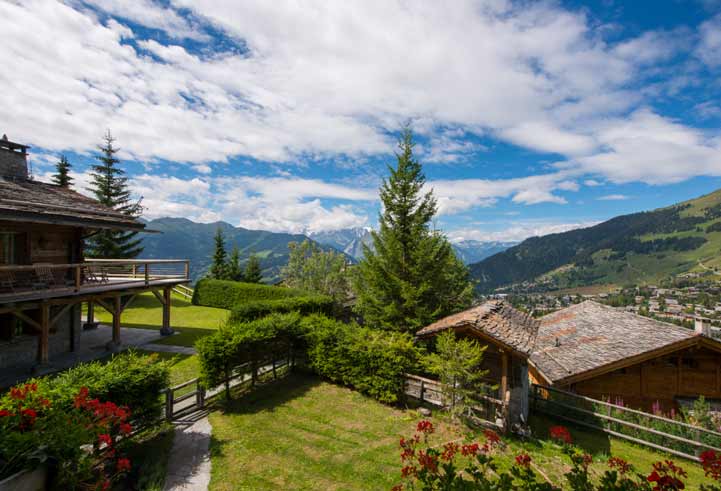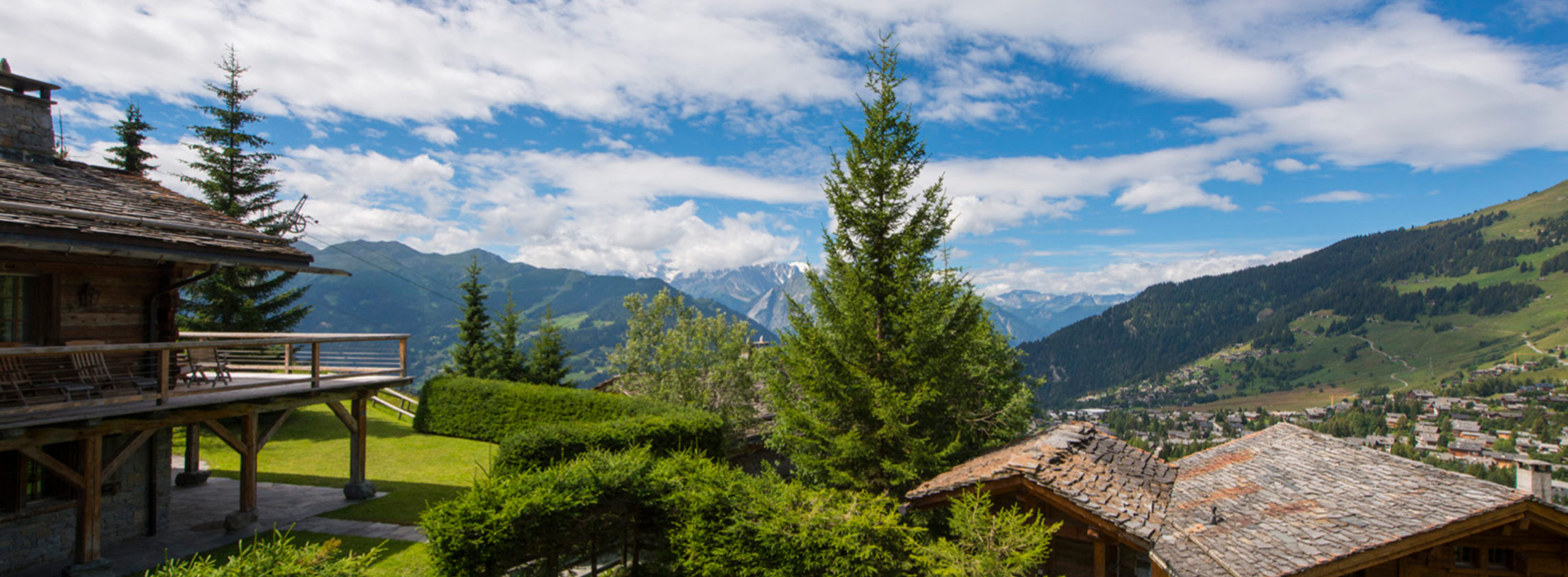What could be the impact of Covid-19 on property markets in the Alps?
The coronavirus pandemic is set to have a substantial impact on the global economy. Oxford Economics predict world GDP to contract by 4.8% in 2020. The unique nature of the crisis means that the rate of recovery is still largely unknown, but has potential long-lasting implications on our day-to-day lives. To better understand what the Covid-19 downturn means for property markets in the Alps, we revisit here what happened during the global financial crisis (GFC) and explore what makes this crisis different.
How does the current downturn compare?
One difference between the Covid-19 crisis and the GFC is that owners are now generally less leveraged than prior to the GFC and therefore there are likely to be fewer distressed sales. Data, from a 2019 Savills and HomeAway survey of holiday homeowners, shows that 44% of those who bought a ski property between 2004–2008 did so without a mortgage (cash purchase), compared to 81% between 2010 and 2014. For purchases from 2015–2019, this share had fallen to 47% as credit has become more available and cheaper. Consequently, we expect the overall level of leverage to be lower than before the previous crisis and less acute owing to affordability levels.
As a result, we anticipate that owners will hold on to their property unless they need to sell, thus maintaining price levels. This is expected to be particularly true for prime and super chalets and apartments, whereas the lower end of the market could see some downward price movements in the short term, for no other reason than to get deals done. Irrespective, we expect that transactional levels are likely to be suppressed across the board in the near term.
.jpg)
Travel changes
The Covid-19 pandemic has disrupted travel globally. The rate at which restrictions are lifted will impact tourist-dependent ski resorts and potentially their property markets. While the expectation of travel patterns after the crisis has passed varies, international leisure travel may be impacted by some lingering nervousness to travel too far from home and by the availability of airline seats, in the short to medium term. On a positive note, it is anticipated that European Schengen zone countries (including Switzerland), will start to reopen their borders in mid-June, thus permitting travel within these countries.
Resorts with good rail connections, or in close proximity to centres of population, are likely to benefit more than remote resorts
Savills World Research
Savills Global Sentiment survey shows just over half of Savills research heads believe personal domestic travel will increase, compared to 29% who think it will fall. This is likely to benefit resorts which are predominantly driven by domestic demand. 66% of skier visits in Austria are non-domestic, although this does not mean that, providing borders are open, that Dutch, German and Czech visitors, for example, will not still be able to ski this winter season. In Switzerland, the percentage of foreign ski visits is less, at 46%, with Italy and France at 35% and 27% respectively. This leaves France potentially less vulnerable and less reliant on overseas tourism.
Nonetheless, resorts with good rail connections, or in close proximity to centres of population, are likely to benefit more than remote resorts, especially if the current 100km distance restriction currently in place in France, is maintained for a longer period or reintroduced in the future.
Lifestyle changes
The large proportion of employees working away from the office in the wake of Covid-19 for an extended period, may be the catalyst for accelerating flexible working patterns and home working. According to the Savills Global Sentiment Survey of research heads in 31 countries around the world, 84% of respondents expected home working to somewhat increase, the remaining 16% expect it to greatly increase.
Consequently, people may want to spend a few weeks, or even months, at a time at their holiday home, rather than a weekend break, and may want to work from there. While travel restrictions also mean trips could be less frequent, but for longer periods.
Purchasers of ski property, are likely to attach a greater value to both indoor and outdoor space, as they spend longer periods in the property at one time for both work and recreation. Savills survey of global residential associates found that three quarters of respondents believe that demand for a home office will increase as a result of Covid-19. But, connectivity will be key, as 83% believe that good Wi-Fi will be a priority for buyers going forward.
Alpine and national housing markets after the GFC
While much remains uncertain, looking at how ski property markets fared during the GFC can give us some pointers of what lies ahead during the impending downturn. Alpine property markets are also often influenced by national housing market trends, so looking at national housing market performance can offer further context.
FRANCE
During the last recession, property values fell significantly in the French Alps, exacerbated by high inventory levels. In resorts such as Chamonix and Flaine, the rapid rise in values prior to the crisis led to considerable softening, with transaction prices recorded at 20% below their peak values. The most significant reductions were witnessed in new build developments.
France’s national housing market followed a different trend to Austria and Switzerland, with a faster rise in prices prior to the crisis followed by a period of price falls. This was a similar trend to that seen in the UK, but less severe, coming off 9% from pre-crisis peak to the trough, compared to 17% for the UK (see chart below).
SWITZERLAND
Switzerland’s Alpine markets managed to avoid substantive price falls following the GFC, as supply remained limited, helping to maintain values. However, the pace of growth seen prior to the GFC did slow, with markets such as Verbier having experienced 20% per annum price growth between 2002 and 2007. The Swiss housing market is generally less volatile than most other European markets and national house prices remained relatively stable during the crisis.
AUSTRIA
Prior to the GFC, Austrian Alpine markets did not see the exponential price appreciation seen in other areas of the Alps and also remained relatively stable. Additionally, low levels of new build product coming to the market meant supply remained limited, thereby helping to support price levels. Likewise, the national housing market largely managed to avoid price falls and quickly returned to strong growth, increasing by 39% from Q1 2007 to Q4 2013.
Across all Alpine markets, top-end destinations were more resilient. A prime example is Courchevel 1850, which occupies a particularly niche end of the market. Here, there were few distressed sales following the GFC with vendors reluctant to sell properties at a loss during the downturn.

Outlook
In the near term, transactional volumes are likely to be suppressed across Alpine markets for the next 6–9 months. We anticipate that vendors who can, will hold on to their ski properties. Those wanting or needing to sell anything other than prime property are likely to have to discount asking prices by up to 10% or possibly more in certain cases. This said, new build stock is likely to fare better than second hand stock, particularly where property has already been for sale for some time.
Swiss and Austrian Alpine markets proved fairly resistant during the GFC, and many of the same fundamentals hold true
Savills World Research
Swiss and Austrian Alpine markets proved fairly resilient during the GFC, and many of the same fundamentals, such as low-supply, still hold true. In France, meanwhile, there is less availability of new build stock in the majority of French resorts compared with 10–12 years ago. This is likely to cushion any downwards price pressure.
A number of resorts witnessed early outbreaks of the virus. However, this is not surprising given the cosmopolitan nature of ski resorts, which attract a range of nationalities, and visitors mixing in bars and restaurants. This is part of what makes skiing so appealing and is a big contributor to the lifestyle element for buyers. This is unlikely to change in the long term and most resorts will be as keen to return to normal as with any other holiday destination. Indeed, Abode On The Snow, a ski music festival scheduled for January 2021 in Val Thorens, is already sold out.
